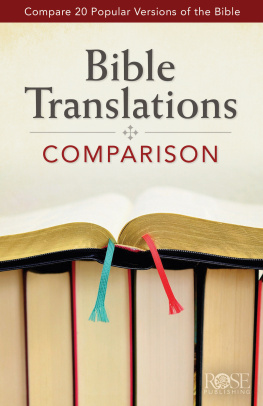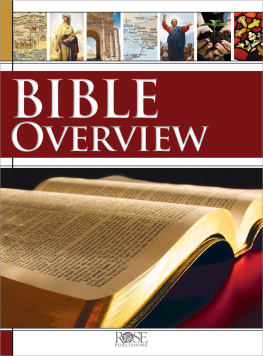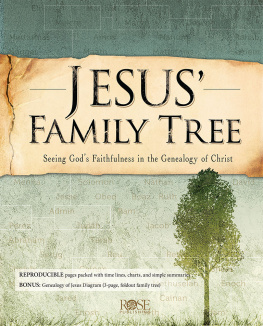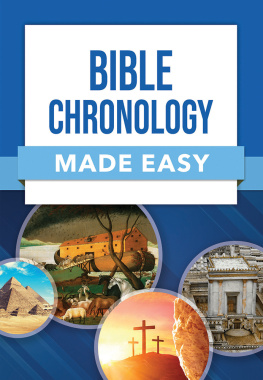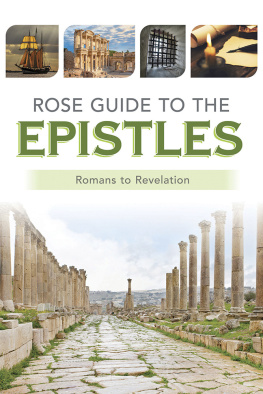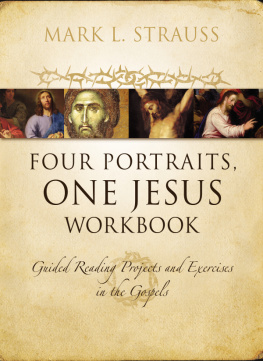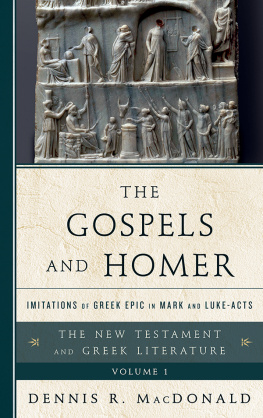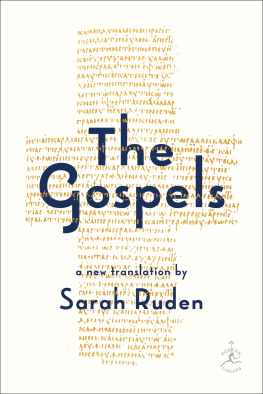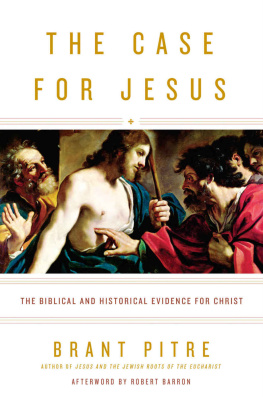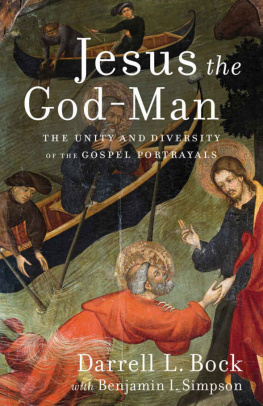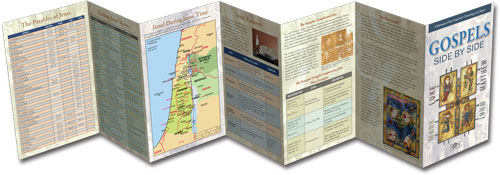Gospels Side-by-Side
This handy eBook:
- Presents Jesus from four different points of view (Matthew, Mark, Luke and John] and shows how their views unite to paint an awesome portrait of God in less than 30 minutes.
- Explains why there are four Gospels instead of just one, how the Gospels complement not contradict each other, and why most of Christ's story focuses on his last week.
- Includes helpful charts and maps to show Jesus miracles, where he traveled, his parables, and more. This is perfect for anyone studying the New Testament, the Life of Christ, or learning about Bible study.
Why Do We Need Four Gospels?
Because the four Gospels contain different accounts of the same or similar events in the life of Jesus, readers of the Gospels have often sought to compare and contrast these accounts by placing them next to each other. These side-by-side comparisons attempt to harmonize the work of the four Evangelists and so are often called Gospel Harmonies.
FOUR POINTS OF VIEW
MATTHEW |
Symbol | Viewpoint | Audience | Jesus the Son of God |
Man | Palestinian Jewish | Jewish world | Is the Messiah King of Israel |
MARK |
Symbol | Viewpoint | Audience | Jesus the Son of God |
Lion | Hellenistic Jewish | Greek-speaking world | Is the Power of God in the world |
LUKE |
Symbol | Viewpoint | Audience | Jesus the Son of God |
Bull | Greco-Roman | Gentile world | Is the Ideal Man of God |
JOHN |
Symbol | Viewpoint | Audience | Jesus the Son of God |
Eagle | Heavenly | Whole world | Is the Word of God |
Why are there four Gospels instead of just one? One answer is that it takes four points of view to get the whole story about Jesus. Some might argue that one authoritative story should be enough. However, God chose to reveal himself using four Gospels. The Gospel of John begins with these words: In the beginning was the Word (vs. 1) and the Word became flesh (vs. 14). In other words, God chooses as his preferred method of communication to speak to humans by means of the human. This is true of the Bible and it is supremely true of Christ whom we are told is God in the flesh (John 1:1418). So then, the Gospels are, like Jesus, both a Divine work as well as a human work. They have real human authors and one divine Author. They give details that might be difficult to understand, but they are never truly contradictory. They have four different points of view on the history of Jesus but only one Divine conclusion as to his identity as the Son of God.
Harmony of the Gospels
- The genealogy of Jesus (Matthew 1:117, Luke 3:2338)
- Jesus birth and childhood (Matthew 1:182:23, Luke 1:52:52)
- John the Baptists ministry (Matthew 3:112, Mark 1:18, Luke 3:118, John 1:1934)
- Christs public ministry and first Passover (Matthew 3:134:12, Mark 1:914, Luke 3:214:13, John 1:354:42)
- Christs ministry in Galilee (Matthew 4:12, Mark 1:1415, Luke 4:1415, John 4:4354)
- His rejection at Nazareth and move to Capernaum (Matthew 4:1322; 8:1417, Mark 1:1634, Luke 4:1641)
- His first ministry tour and second Passover (Matthew 4:2312:14, Mark 1:353:6, Luke 4:427:50, John 5:147)
- His second ministry tour (Matthew 12:1513:58, Mark 3:76:6, Luke 8:156)
- His third ministry tour (Matthew 9:3511:1; 14:112, Mark 6:629, Luke 9:19)
- Ministry to his disciples and third Passover (Matthew 14:1318:35, Mark 6:309:50, Luke 9:1056, John 6:171)
- Ministry in Judea (Luke 10:113:21, John 7:110:39)
- Ministry beyond Jordan (Matthew 19:120:34, Mark 10:152, Luke 13:2219:27, John 10:4011:54)
- The last week (Passover/Easter) (Matthew 21:1228:20, Mark 11:116:20, Luke 19:2824:53, John 11:5521:25
- Arrival in Bethany and Mary anoints Jesus feet (Matthew 26:613, Mark 14:39, Luke 19:28, John 11:5512:11)
- Triumphal entry (Matthew 21:111, Mark 11:111, Luke 19:2944, John 12:1219)
- Second cleansing of the temple; barren fig tree cursed (Matthew 21:1213; 1822, Mark 11:1218, Luke 19:4548)
- Greeks seek Jesus; fig tree withered (Matthew 21:1922, Mark 11:1925, Luke 21:3738, John 12:2050)
- Jesus authority challenged (Matthew 21:2322:46, Mark 11:2712:37, Luke 20:144)
- Denouncing the scribes and Pharisees (Matthew 23:139, Mark 12:3840, Luke 20:4547)
- Widows offering (Mark 12:4144, Luke 21:14)
- The Olivet discourse (Matthew 24:125:46, Mark 13:137, Luke 21:536)
- Crucifixion predicted (Matthew 26:15, Mark 14:12, Luke 22:12)
- Judass bargain (Matthew 26:1416, Mark 14:1011, Luke 22:36)
- Preparation and the Passover (Matthew 26:1730, Mark 14:1226, Luke 22:720, John 13:114:31)
- Discourse and high priestly prayer (John 15:117:26)
- Gethsemane (Matthew 26:3646, Mark 14:3242, Luke 22:3946, John 18:1)
- Betrayal, arrest, and trial (Matthew 26:4756, Mark 14:4352, Luke 22:4753, John 18:214)
- Jesus condemned to death and Peters denial (Matthew 26:5775, Mark 14:5372, Luke 22:5465, John 18:1527)
- Formal condemnation after dawn (Matthew 27:12, Mark 15:1, Luke 22:6671)
- Judas suicide (Matthew 27:310)
- Jesus first time before Pilate (Matthew 27:1114, Mark 15:15, Luke 23:15, John 18:2838)
- Jesus before Herod the Tetrarch (Luke 23:612, John 18:3919:16)
- Jesus second time before Pilate (Matthew 27:1526, Mark 15:615, Luke 23:1325)
- Soldiers mock Jesus (Matthew 27:2731, Mark 15:1623, Luke 23:2633, John 19:1617)
- The crucifixion (Matthew 27:3249, Mark 15:2136, Luke 23:2643, John 19:1829)
- Jesus death (Matthew 27:5056, Mark 15:3741, Luke 23:4449, John 19:3037)
- Jesus burial (Matthew 27:5766, Mark 15:4247, Luke 23:5056, John 19:3842)
- Earthquake and tomb opened (Matthew 28:14)
- Visit of women at dawn (Matthew 28:58, Mark 16:13, Luke 24:18, John 20:1)
- Women report to the apostles; Peter and John visit the tomb (Luke 24:912, John 20:210)
- Jesus appears first to Mary Magdalene (Mark 16:911, John 20:1118)
- Jesus appears to other women; the guards report to the rulers (Matthew 28:915)
- Jesus appears to two on the road to Emmaus (Mark 16:1213, Luke 24:1332)
- Jesus appears to Peter (Luke 24:3335)
- Jesus appears to ten, Thomas absent (Mark 16:14, Luke 24:3643, John 20:1925)
- Jesus appears to the eleven, Thomas present (John 20:2631)
- Jesus appears to seven on the sea of Galilee (John 21:125)
- Jesus appears to about five hundred at an appointed mountain in Galilee (Matthew 28:1620, Mark 16:1518)
- Jesus appears to his brother James (1 Corinthians 15:7)
- Jesus appears to his apostles again, his ascension (Mark 16:1920, Luke 24:4453)
- Jesus appears to Paul (1 Corinthians 15:8)
Galilee and Judea
Jesus began his public ministry in Galilee, in the northern region. He spent much, if not most of his time there. Jesus frequented Judea and Jerusalem for the required religious festivals, but it seems he only spent significant time there late in his ministry (Luke 9:51). John affirms that his safety was compromised in Judea, and that it was only under cover that Jesus made his way to Jerusalem (John 7:110).



